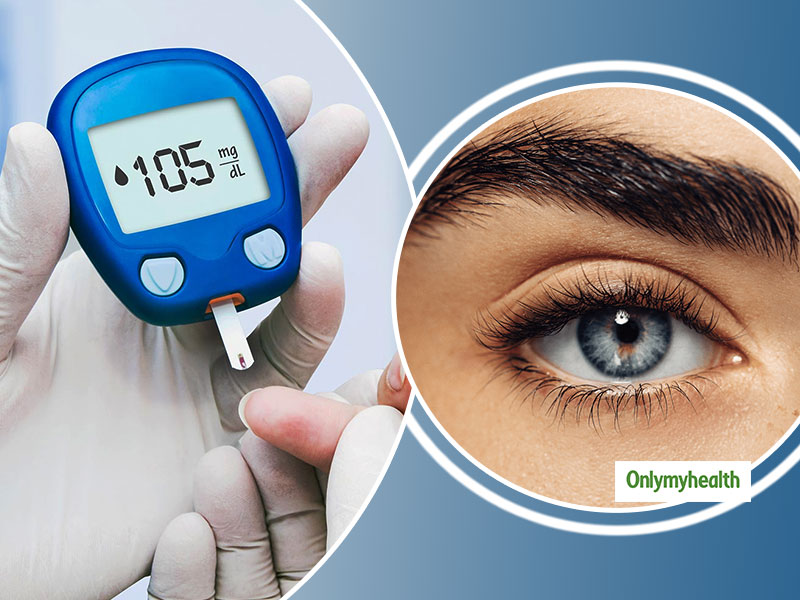
Diabetic retinopathy is caused by damage to small blood vessels. These blood vessels provide nutrition to the retina. When damaged, blood and other fluids leak from these vessels leading to inflammation in retinal tissues and blurring of eyesight. This condition usually affects both eyes. Those who have diabetes should take great care of their eyes. Even though diabetes is a different health concern, if not controlled on time, can affect the other organs too. It is common in people with diabetes to display signs of blindness. This is when the retina is damaged. Dr Rajesh R, Consultant Vitreo-retina & Ocular Oncology, Sankara Eye Hospital, says, "Those who have diabetes for less than 10 years are at a lower risk of developing diabetic retinopathy. The main problem here is when the high blood sugar levels are left untreated for a longer duration, the problem of eye-related concerns arise."
Table of Content:-
Eye Lens Swell During High Blood Pressure

Oxygenated blood is required for the tissues and organs to function correctly. Our circulatory system does the work of supplying blood. The heart creates a pressure that pushes blood into our blood vessels which include arteries, veins and cells. Normal blood pressure is within 100–140 mmHg systolic (highest-reading) and 60–90 mmHg diastolic (lower-reading). High blood pressure condition occurs when it remains at or above 90/140 mmHg. High blood pressure can have many terrible consequences. One such is diabetic retinopathy.
Initially, there are no symptoms of diabetic retinopathy in diabetes patients. However, complaints like distorted view, blurring and floaters are some significant symptoms indicating towards this damage. Further, the other major eye problems that people with diabetes are prone to can be glaucoma and cataracts. Micro aneurysms are known as the earlier signs of diabetic retinopathy in medical terms.
Also Read: 5 Natural Ways To Bring Insulin Levels Under Control For Patients of Type-2 Diabetes
Stages of Diabetic Retinopathy
- Mild: Swelling in the retina blood vessels, which may be challenging to diagnose
- Moderate: In this stage, the blood vessels that supply blood to the retina are blocked.
- Severe: In this stage, the blockage increases, indicating the body for the need of nutrition for the retina.
- Proliferative: This means the inside of the eye is filled with fragile blood vessels. These thin walls could lead to a disturbing vision.
There Is No Cure For Diabetic Retinopathy

The only reason doctors stress the need for having controlled diabetes is that diabetic retinopathy has little to no cure. In the worst cases, patients can also become blind. The most important here is to maintain a lifestyle, which should be apt for those with lifestyle-related diseases. Right from eating a balanced diet to performing basic exercises can help in reversing the signs of diabetes. Apart from diabetic retinopathy, diabetes can also lead to stroke, nerve damage, heart problems, etc.
Also Read: Pick Your Plate Wisely To Keep Diabetes Away
Diagnosis and Treatment Of Diabetic Retinopathy
To understand this medical condition, the doctor suggests to undergo tests like Ultrasound B-Scan, Optical Coherence Tomography, says Dr Rajesh. Also, in cases where there is a hope to save the eyesight, the below-mentioned techniques are primarily used for treatment:
- Laser: A less-invasive and less time-consuming treatment method, lasers are extensively used to treat diabetic retinopathy. In this, a laser beam is used to manage the problem.
- Surgical: In some cases, lasers are not that effective due to the advanced stage of the disease. In such cases, vitrectomy surgery is advised.
With inputs from Dr Rajesh R, Consultant Vitreo-retina & Ocular Oncology, Sankara Eye Hospital
Read more articles on Diabetes
How we keep this article up to date:
We work with experts and keep a close eye on the latest in health and wellness. Whenever there is a new research or helpful information, we update our articles with accurate and useful advice.
Current Version